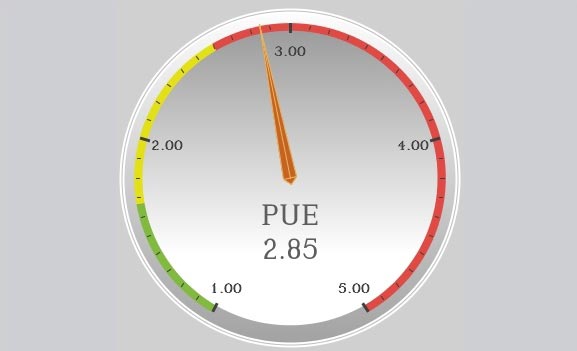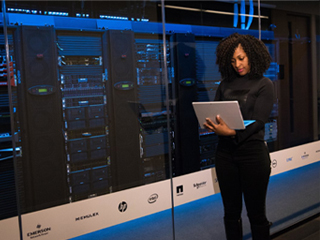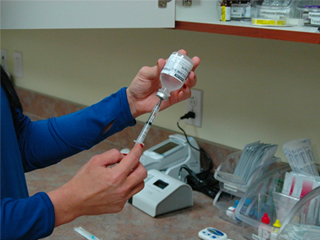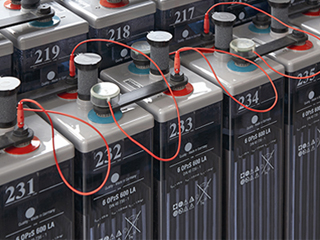Digital technologies have brought to us a new way of living. Every industry contends to create its own technology-driven metamorphosis. As the world relies on the Internet of Things (IoT), data centers are thriving to meet this demand. Facilities are now designed into a hyper-scale environment. This transformation includes escalating IT load requiring ever-increasing power, and as a result, cooling.
However, the amount of power needed to support such infrastructure is a challenge. Data centers use massive amounts of energy causing the operational costs, and environmental impact to rise. Their use of water for cooling systems is also detrimental to the local environment. Fortunately, the task of increasing density while minimizing cost and environmental impact are possible. Analysis of how efficiently the data center is using its power can be done is by using appropriate metrics, such as Power Usage Effectiveness (PUE).
Power Usage Effectiveness as a Standard Metrics
Power Usage Effectiveness (PUE) is measured to assess how efficient the data center and IT infrastructure are in utilizing power. This aims to standardize the method of computing power usage and efficiency.
Administrators may use their own approach in accumulating their energy usage data. However, PUE cannot be benchmarked without the approved method. The data must be outlined and computation should run in the form of guidelines and standards. Today, along with the other xUE’s proposed by The Green Grid (TGG), PUE has been widely adopted by the industry. Keeping track of these metrics makes growth more sustainable and cost-effective.
Computing Power Usage Effectiveness
PUE is computed by dividing the total power entering the data center by the power consumed by the IT equipment. This power includes more than the direct usage to run the IT equipment. The cooling system, environmental controls, and utility within the facility also contribute to this figure. On the other hand, the total energy may come from electricity and other sources such as natural gas, fuel, and water. Based on its formula below, PUE is expressed as a ratio. The efficiency is improving as the quotient comes closer to 1.

For instance, a data center that has a total of 14 MWh with IT equipment requiring 11 MWh of power will generate a result of 1. 27. This PUE implies that the data center is running efficiently.
The Average Power Usage Effectiveness

Having a PUE of 1.0 has been the ultimate goal of every data center administrator. However, this perfect number is far from being achievable today. That would mean 100% free cooling. Current and voltage regulation has a series of phases between the transit from the power supply to the usage points. The power entering the data center will always be higher than the amount consumed by the IT Equipment. For the past years, the average PUE has been under argument with experts in the industry.
According to TGG, a PUE should not be greater than 2.5 in any data center, although 1.6 is achievable. Google and Microsoft with more than 1-million powered servers reported a PUE of 1.12. Facebook surpassed this figure by generating a PUE of 1.06-1.08 in its Prineville, OR, data center. With the help of Eaton, an energy-efficiency expert, Facebook developed a solution for the Forest City facility that meets the company’s growing demand with a greener data center design. It is no doubt that these numbers are achievable by these industry leaders where resources are within their reach. But the rest of the data centers are climbing a difficult road. The Uptime Institute research revealed that the average data center has a PUE of more than 2.5. Others may go as high as 3.3. This implies that the data center facility’s power demand is three times greater than the energy needed to operate the IT equipment!
Data Center Infrastructure Efficiency (DCiE)
DCiE is the ratio of the energy consumed by the equipment to the total power available. The lower the PUE, the higher the DCiE. This circumstance indicates a highly efficient data center environment. It is the reciprocal of PUE which is expressed in percentage.

Industry benchmarking of data centers using PUE and DCiE will create a comparison to evaluate the current data center design. It will allow administrators to strategize how to improve efficiency. To come up with a valuable benchmark, it should be done regularly on different days and times.
Factors Affecting PUE
To improve PUE, knowing the components in this measurement is critical. As a famous saying goes “You can’t tell where you’re going unless you know where you’ve been.”
- IT Equipment – Data center efficiency varies with the IT Load. Due to changing demands, server loads may increase which can result in a higher PUE.
- Ambient Temperature – For data centers with hot environments, fans and cooling systems consume more energy. Rising temperatures can compromise the efficiency of the data center. ASHRAE recommends that server inlet temperatures be between 18°C and 27 °C. Many data centers run “too cold” towards the lower end of the scale. A simple strategy to improve PUE and lower energy costs is to increase your data centers temperature closer to the upper limit.
- User Configuration– Users may set configurations for temperature, humidity, and airflow. When one of these parameters is adjusted, changes in PUE will follow. This requires another set of measurements to ensure accuracy. Sensors can be useful in maintaining the threshold.
- Uninterrupted Power Supply- All data centers need UPS to provide backup when the power source fails. Its power supply accounts for about 5% of the total power consumption. High-density data centers require more UPS.
- Data Center Design- The airflow varies on the arrangement of the racks on the data center floor. The placement of fans on the ceiling may also contribute to the PUE result.
Strategies to Improve Data Center Efficiency
Strategies can be created and implemented after obtaining accurate metrics of the current data center design. These of course lead the way to a more economic and sustainable approach. Here are strategies that will help improve data center efficiency:
- Reducing the Load of IT Equipment. Reducing 1 watt at a server level will save up around 3watts of total energy. High-density data servers can also adapt server virtualization. It reduces the number of servers on a data center floor and cuts down on energy consumption since fewer physical servers are running on power. There are 3 types of server virtualization:
-
-
- Virtual machine model (or “full virtualization”)
- Paravirtual machine (PVM)
- OS-level
-
- Removing Zombie Servers. Data centers that are upgrading their operation often overlook the hidden ghost servers. These are servers that are no longer utilized yet remain powered on, consuming energy. Gartner revealed that 28% of the physical servers in data centers are “ghost” servers.
- Proper Layout. A Datacenter must be designed into a hot and cold aisle layout. It helps prevent cold “supply” air from mixing with hot exhaust air, resulting in cooling savings from 10 to 35 percent. It can be later modified into a containment providing better separation of the air through a physical barrier.
- Time for an Upgrade. The drives that are no longer practical should be upgraded. New drives that are offered in the market usually consume less power than the generations that preceded it. In addition to efficiency, they also offer more capacity and higher performance.
- Utilize Free Cooling – Industry giants such as Facebook and Apple leverage sustainability with their data centers by using nature in their cooling systems. A data center can use either water cooling techniques or renewable energy like solar and hydro. Several free cooling approaches are introduced into the industry which can be implemented based on budget, data center design, goal, etc.
- Consistent Monitoring – Temperature, humidity, airflow, and power are significant factors that influence the PUE. A slight change that goes beyond/below the limit on these parameters can cause problems leading to data center downtime. With the use of sensors, data over a specified interval can be easily obtained.
AKCP PUE and DCiE Calculations
The Industry Standard in Data Center Efficiency
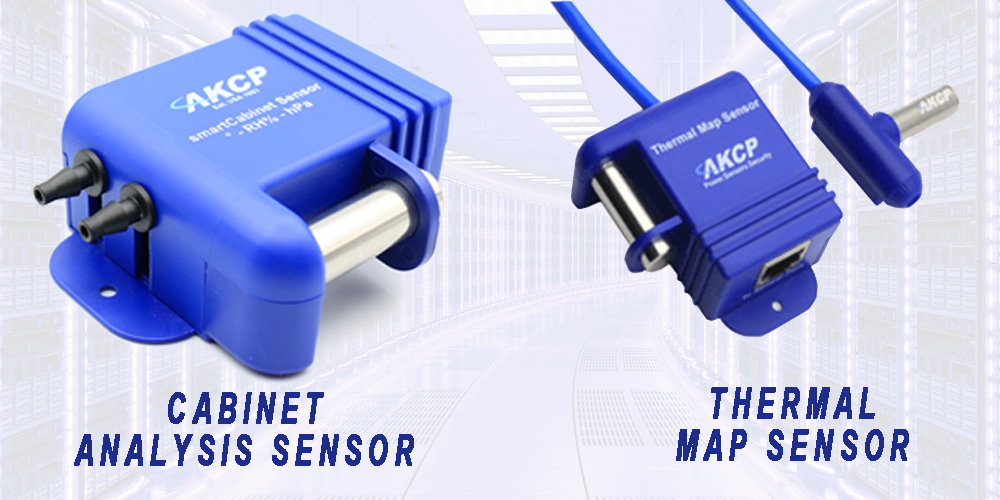
Cabinet Analysis and Thermal Map Sensors
AKCPro Server shows live PUE calculations. Using power meters the total facility and IT loads are used as the input. The resulting PUE is displayed dynamically. As your facility loads change, the live PUE numbers will also update. Make changes in your facility and see instantly how much power you are saving. With the addition of cabinet thermal maps, you can ensure maximum PUE, while not violating ASHRAE recommended inlet air temperatures. Cabinet thermal maps also monitor the △T across the rack to ensure cooling is being utilized.
AKCP monitoring solutions allow you to gain detailed insights into your data center facility’s environmental and power parameters. Checking for hotspots, differential air pressure, and airflow around your data center. Ensure that real-life measurements match predicted cooling and airflow analysis from CFD models. Once you have the proper sensors and monitoring in place, the measurements can be used to begin controlling your data center for maximum efficiency. The first thing to do is determine what is your current PUE and use this as a benchmark.
Reference Links:
A-Systems-Overview-of-Commercial-Data-Centers_-Initial-Energy-and-Cost-Analysis.pdf
http://www.eaton.com.co/EN/Andean/OurCompany/SuccessStories/FacebookDataCenter/index.htm
https://www.colocationamerica.com/blog/what-is-pue
https://pdf.sciencedirectassets.com/280203/1-s2.0-S1877050915X0007X/1-s2.0-S1877050915006729/main.pdf?X-Amz-Security-Token=

